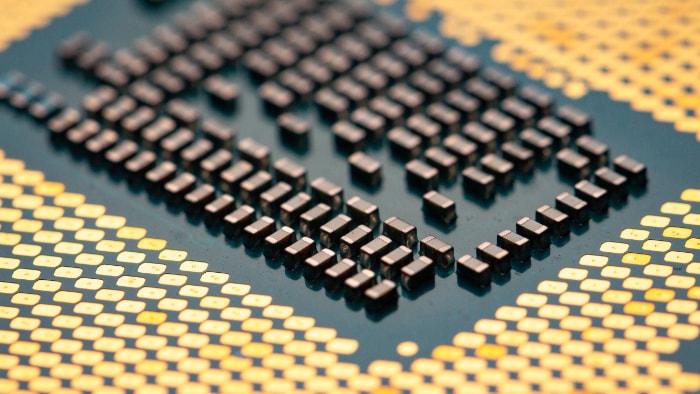Examples of Edge Computing
With data becoming ever crucial in technological and business advances, new ways are being developed to streamline this data processing to decrease costs, increase efficiency, and improve the quality of human life.
What Is Edge Computing?
Edge computing is a part of this technological revolution and is built around the concept of processing data at the source of its generation.
By making devices work autonomously, instead of redirecting data to another computer, the boundaries of what can be achieved are broken down.
For example, your wearable devices (like smartwatches) are a part of edge computing since they process all incoming data (like blood pressure, heartbeat rate, blood quality) in the device in real-time.
This provides you with up-to-date information and lets you keep a check on your health simply by wearing a watch.
Applications of Edge Computing
While the smartwatch is a very personal example of edge computing, its applications are worldwide, as businesses are slowly adopting techniques to increase the productivity and efficiency of their processes.
We've listed several different edge computing examples and opportunities to implement edge computing to explain the importance of this concept:
Patient Monitoring Equipment
Patient information is recorded and processed on different sensors and monitors and is usually not connected to a unified database.
Hospitals also rarely store patient data on dedicated servers but instead purchase the services of a third party.
This could create privacy issues, and a local processing system could provide staff real-time updates on patient information, with all related information on one dashboard.
This would streamline the patient monitoring process and eliminate the need for extra staff.
Self-Driving Cars
This concept is fast becoming a reality, which is only possible because of edge computing. Autonomous vehicles require ultra-fast processing; otherwise, any delay in the vehicle's maneuvering can be deadly.
A great example of edge computing applied to vehicles would be autonomous trucks driving behind one another, with only one driver at the front.
Since the trucks in the back would be receiving a signal from the front truck, the need for additional drivers is eliminated.
Another great example would be navigational software used by drivers. While traveling from point A to point B, drivers use automatic guidance help. In real-time, the route and projected time are updated.
The data is acquired from the edge servers to update the drivers quickly. The edge computing technology allows consumers to receive data updates instantly.
Oil and Gas Sector Applications
When internet access is scarce, edge computing is the solution for isolated offshore oil rigs. Failures in the oil and gas industry may be devastating.
As a result, their assets must be closely watched. But oil and gas installations are frequently located in isolated areas.
The data generated by oil rigs are more than the networks can manage, thus IoT is being used to process it.
Edge computing addresses the problem by performing computations at a server that is closer to the data source, lowering latency, and reducing the requirement for high-quality connectivity to a centralized cloud.
Game Streaming Platforms
You might've heard about Stadia, Google's attempt at making heavy gaming available to consumers at a fraction of the price. The concept involved processing the games on remote servers while users could control and stream the game on their low-end devices.
While the concept was great, the only requirement was an insanely good internet connection. Cloud gaming businesses aim to install edge servers to minimize latency and deliver a completely responsive and immersive gaming experience as near to gamers as feasible.
Pretty soon, all you might need to play a AAA title is a laptop with just an internet connection!
Security and Cameras
Video footage is gathered, processed, and analyzed on NVR computers, with only film triggering specified triggers sent to the cloud for remote monitoring and analysis.
Because not all video footage is important enough to be sent for data processing, only particular clips where triggers have been set off are sent for extra analysis and inspection, the amount of necessary internet traffic is reduced.
This can be in the form of any interruption in an otherwise static scene or the obscuring of the camera lens.
These factors might be tagged as “alarming” and sent to a nearby processing unit (probably on the premises) which might notify authorities or activate the alarm.
Virtual Assistants
IoT devices gather and analyze data from all throughout the house in smart homes. This information is frequently transmitted to a centralized distant server, where it is processed and stored.
But this process requires sending data to a server, which is inefficient, costly, and security concern as well.
Edge computing can eliminate this, which might only transfer and receive data from a local server. This would bring down response time to mere seconds or even milliseconds and preserve your privacy as well.
Manufacturing
Industrial companies use edge computing to monitor manufacturing, allowing real-time analytics and machine learning to be performed at the edge to detect production mistakes and enhance product quality.
The deployment of environmental sensors across production plants was aided by edge computing, which provided information into how each product component is built and stored and how long the components remain in stock.
Cameras at industrial plants and security cameras record the environment and send only the required data to the local cloud for storage and analysis.
Other issues are also solved by edge computing, like edge computers receive data from various sensors, cameras, and other devices and use that data to detect when components or machines fail.
Factory workers undertake maintenance or replace a component before it fails during regular machine operation, saving businesses money from lost productivity and missed delivery deadlines.
Conclusion
While these are just a few examples of how edge computing is taking over the world, we will soon be able to witness a future where this has become the norm.
The convenience and efficiency that edge computing offers are unparalleled, and both businesses and individuals will soon be adopting this technology as soon as it becomes cost-effective.




